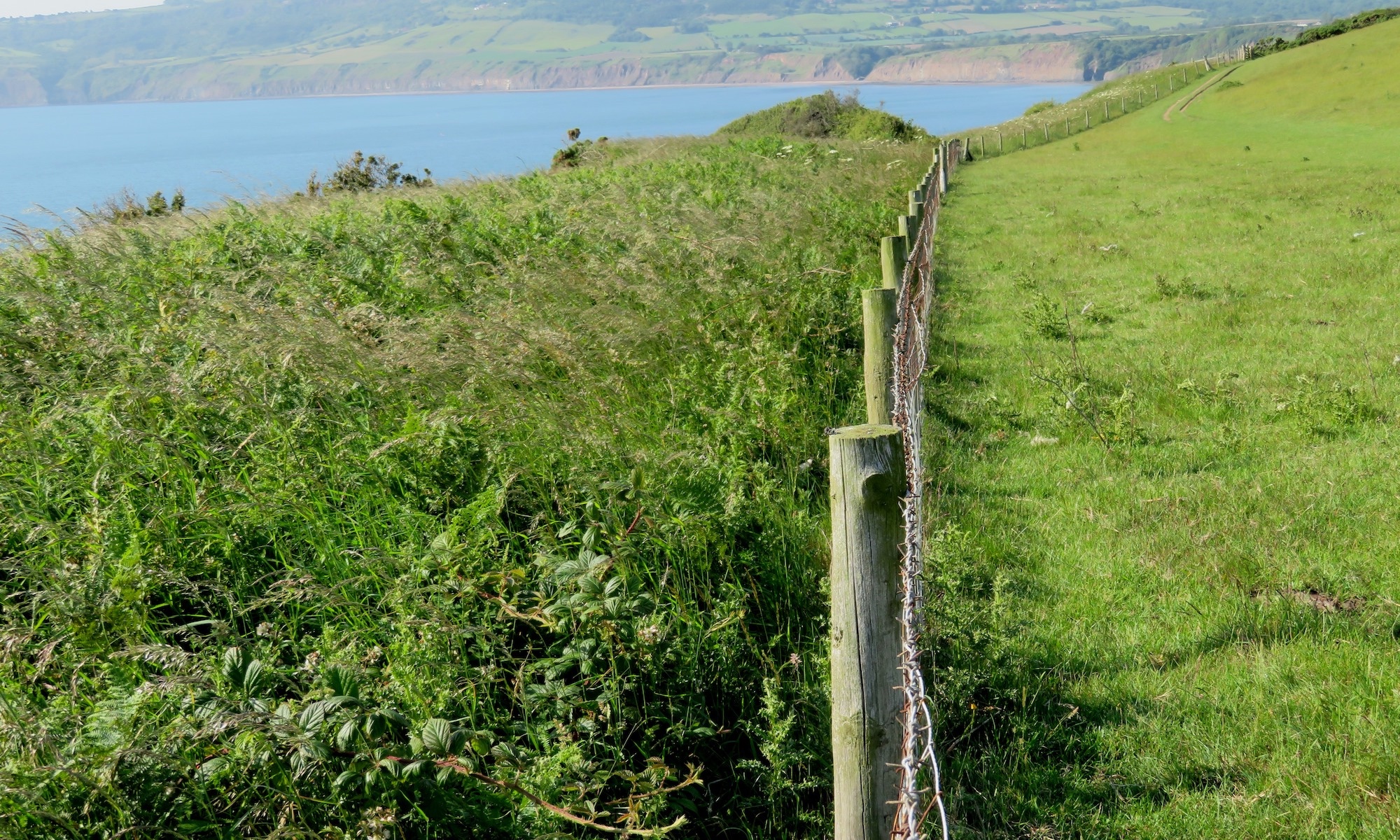by Hilary Koll
14th July, 2023
In my last blog post I introduced you to adorable Harvest Mice, one of Britain’s least conspicuous mammals. You can read Part 1 of this blog series here: Guest blog: An unexpected journey (Part 1).
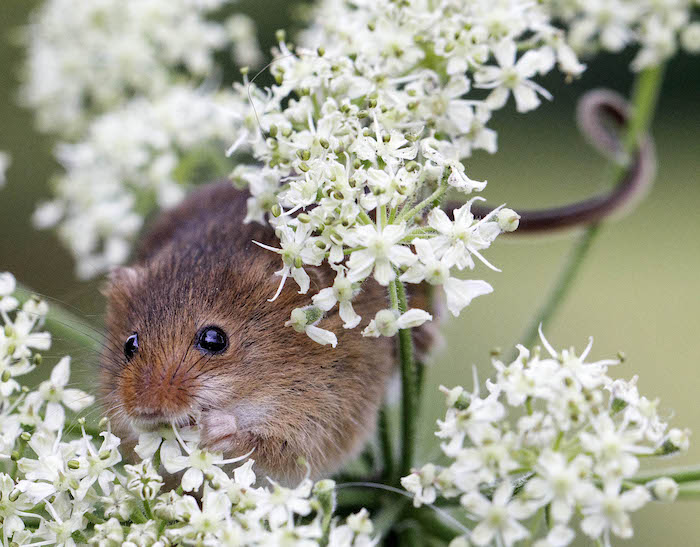
These tiny creatures – the smallest of the UK mice family – are rarely spotted due to their acute sense of hearing helping them avoid predation. They will either freeze or drop into cover on hearing rustling sounds up to 6m away.
This makes them good at avoiding most predators, but not almost silent ones, like owls. In the field we’re rewilding, a Barn Owl floats silently above the ground each night listening for the tiny sounds of voles and mice, while the voles and mice are listening out for the sounds of any predators. It’s like an arms-race to be quietest – so much so that the Barn Owl, unlike nearly all other birds, has evolved silent feathers by sacrificing their ability to be waterproof! Their ghostly silence comes at a price – the edges of their wings, feathered to reduce noise, don’t repel water so the Barn Owl can’t hunt in the rain for prolonged periods. It’s a trade-off that sometimes works well – they can successfully hear without being heard – but during long spells of bad weather it sadly can be disastrous for them.
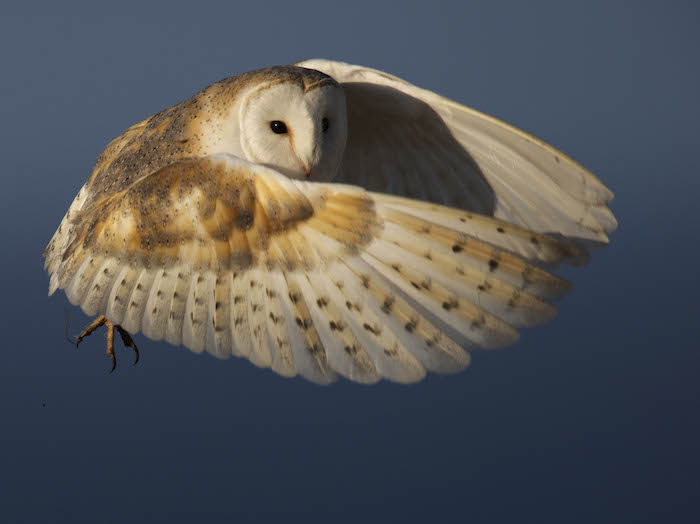
When owls successfully hunt small mammals, birds, beetles, frogs and toads and even bats, they are unable to digest all the non-fleshy parts – the bones and fur for example – and rather than passing these parts through their digestive system the birds regurgitate them out of their mouths as sausage-shaped pellets. By collecting these dry pellets and analysing their contents we can tell a lot about which creatures are living in the locality. In my quest to find out if Harvest Mice were in my local area, I was fortunate enough to be introduced to Derek Capes, a retired gentleman who has been researching the contents of owl pellets in the North York Moors for more than 15 years.
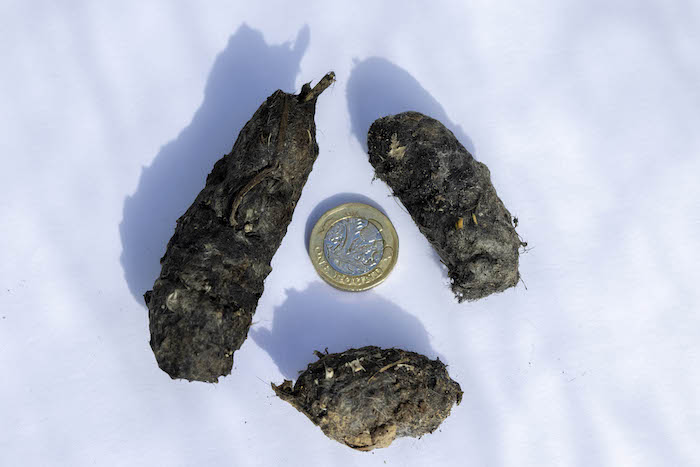
In that time Derek has analysed over 7,000 pellets and has found a staggering 33,000 prey items in them – tiny skulls, fragments of jaw bones, claws, teeth and feathers. The experience Derek has in being able to identify each part and determine which species each belongs to is quite amazing. He can distinguish between 12 species of mammal using size, skull-shape, jaw-shape and even colour of teeth. Separating Pygmy Shrew skulls from Common or Water Shrew skulls is quite a skill!
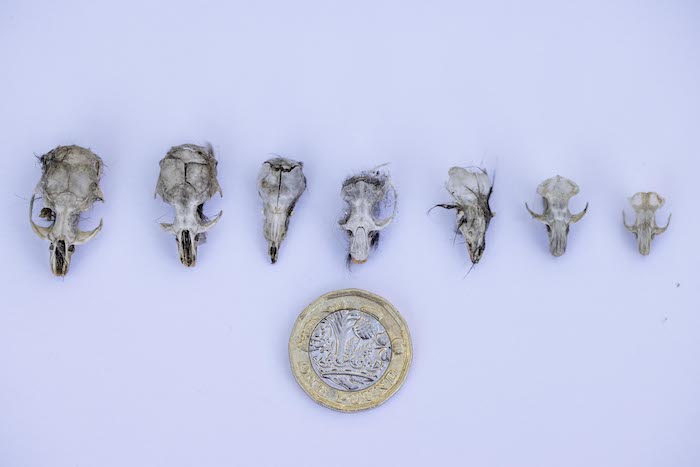
The image above shows six skulls we have found when analysing our Barn Owl pellets and, on the right, is a skull of a Harvest Mouse given to us by Derek. You can clearly see why it was given the Latin name Micromys minutus! Not only is size a clue to recognising Harvest Mice skulls but their jaws are distinct from other mice in the number of molar root holes (five in the first upper molar and a total of seven root holes in the lower jaw). For anyone wanting to investigate this skill further I would strongly recommend the publication ‘The analysis of Owl Pellets ‘by DW Yalden & PA Morris (see link at the end).
So far, we have not seen any signs of Harvest Mice in our field but Derek has found evidence of several hundred of them in owl pellets collected across a wide expanse of the North York Moors, suggesting they are not as rare in this region as once thought.
Whilst there is no doubt, however, that Harvest Mice are under-recorded across the country they are classed as ‘near-threatened with extinction’ in Britain so, with the help of the Yorkshire Rewilding Network, we contacted Derek Gow’s organisation that runs programmes to reintroduce Harvest Mice (along with many other threatened species) into the wild. Our field, with rough grassland and scrub including cocksfoot and bramble, seems ideal for Harvest Mice and discussions are underway to establish whether reintroduction might be possible next year. As part of these discussions, I was privileged to be able to visit a site in the Yorkshire Dales for a Harvest Mice release last week. About 300 of these delightful little mice were transported to Martyn Strong’s Farm near Redmire and a small team of us released them into his fields. Here are a couple of photos but I shall write more of the release programme in my next blog post.
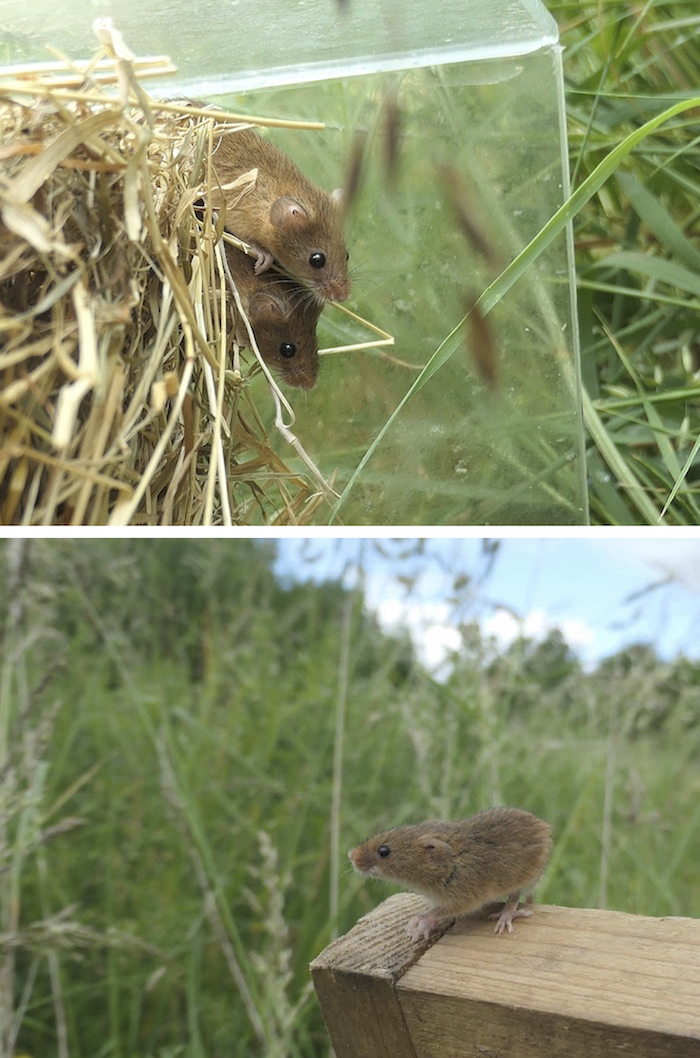
In the meantime, I have been learning about the different nests that Harvest Mice build. When breeding time comes around, females can build up to three maternity nests for each litter before deciding which one to use. These grass nests are green and about the size of a tennis ball. (If a brown nest is found of the same size this is likely to be no longer in use). Other smaller nests, about the size of a golf ball, are built by both males and females and these are solitary nests, used year-round for sleeping, so could be in use no matter what colour they are.
I was delighted to discover that several wildlife projects have taken used tennis balls, drilling small holes in them and placing them in rough grass or attached to canes. The results were not uniformly successful but, where the tennis balls were used by Harvest Mice, they were predominantly used for solitary, rather than maternity, nesting. I do like to imagine, though, that all the many chewed tennis balls my dog dropped in thick grass over the years are being repurposed by opportunistic Harvest Mice!
If you’d like to contact Hilary about any sightings, send us a message on our contact page and we will pass it on. Alternatively, you can message her directly on our Forum (join the Yorkshire Rewilding Forum here).
For more information, see the links below.
Useful links:
The Analysis of Owl Pellets (Occasional Publications). Yalden, D.W., Morris, P.A.
Watermead County Park mice to live in tennis balls. BBC News, 26 April 2013.
Mammal Society Harvest Mouse Project
Video of wildlife group surveying a site for Harvest Mice nests
National harvest mouse survey results
